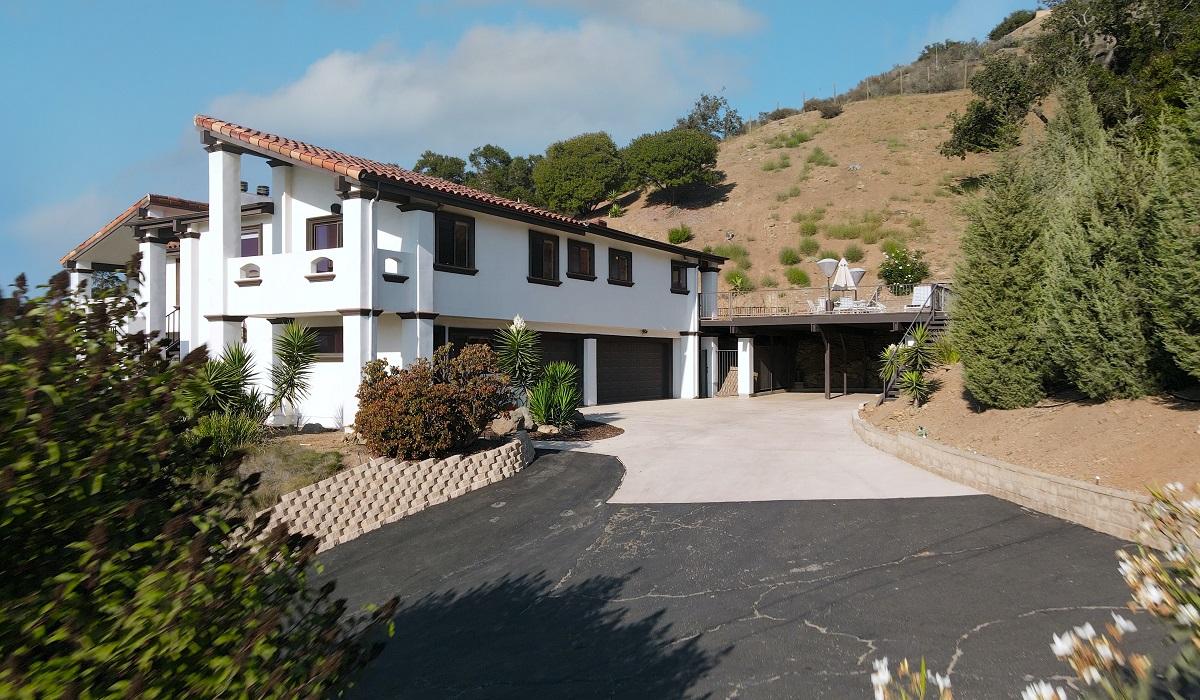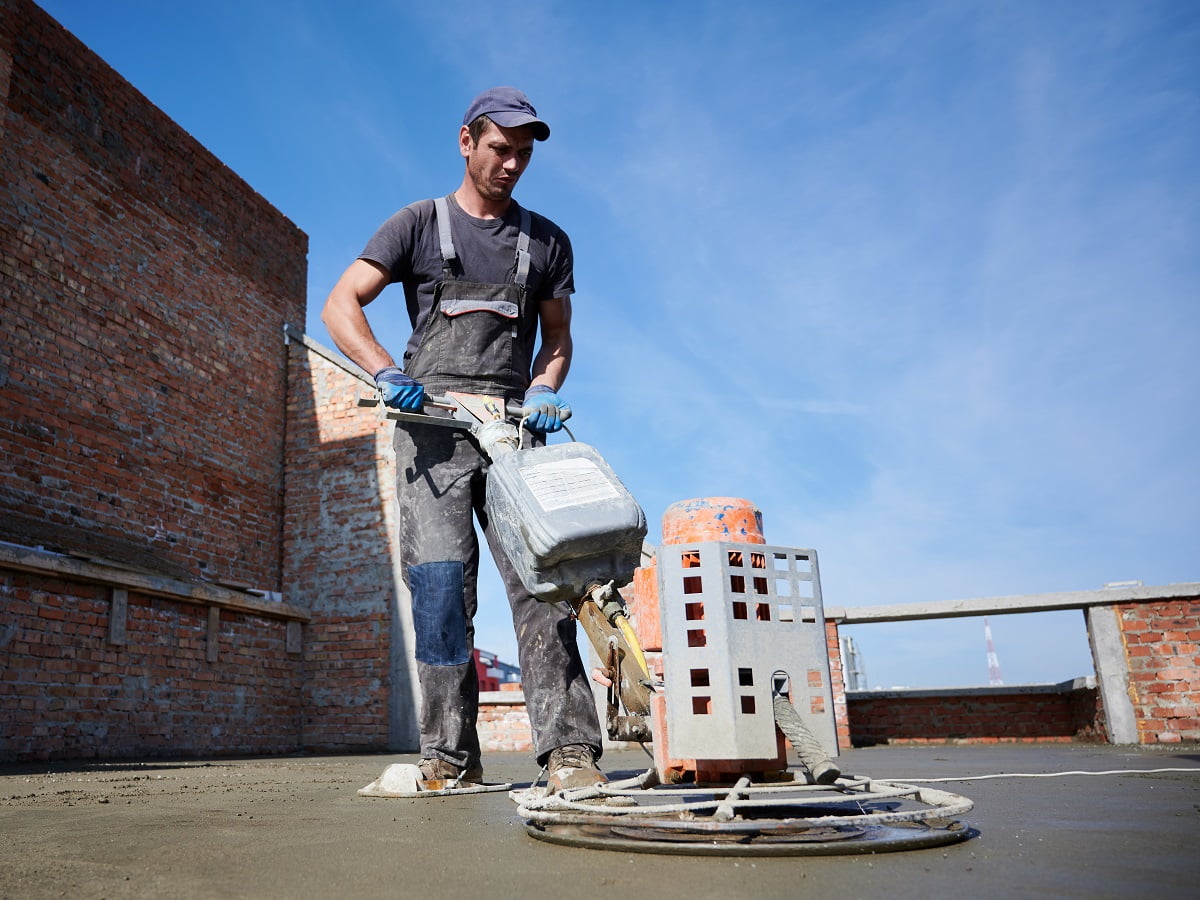Repairing an old concrete surface can be challenging, but it isn’t impossible.

Concrete is one of the most versatile construction materials on the market. However, its quality can degrade over time due to damage from weather, sun, and physical impacts.
Concrete resurfacing can be used to repair the existing concrete by removing a thin layer of old concrete and replacing it with a new layer. In fact, this is one of the most effective ways of repairing old concrete to make it more durable.
So today, we will tell you all about concrete resurfacing, including the best concrete crack filler, types of cracks in concrete slabs, and best asphalt crack filler to help you make an informed decision. Now, let’s dive in!
What Is Concrete Resurfacing?

Old concrete surfaces have a tendency to get damaged or cracked due to intense weathering and other external factors. However, it may not always be possible to replace them with new ones, mainly due to budget constraints. And here's where concrete resurfacing can come to your rescue.
The damaged top layer is removed, and the cracks are repaired before a new layer of concrete is applied to the concrete. This new layer is made from a material known as a resurfacer.
Although resurfacers look like concrete, they are fundamentally different when it comes to the main composition. The compound is made from a special bonding agent that allows it to adhere well to old concrete.
On the contrary, if you apply a new layer of concrete without applying a resurfacing material, then the two layers will not bond well. Eventually, these thin layers will crack due to various external reasons, but resurfacers add an extra layer of protection as well as help with better bonding.
How Does Resurfaced Concrete Look Like?
Despite having a different chemical composition, resurfaced concrete looks identical to an existing concrete surface. Resurfacing focuses on getting the cracked surfaces repaired and repairing the damages with a new layer of resurfacer. Hence, you can’t tell any major difference when you look at a resurfaced concrete slab.
Decorative Concrete Resurfacing Ideas
The good news is that you can use some techniques while pouring the resurfacer to enhance the overall look. And here is a list of options you can try to enhance the looks of your concrete resurfacer:
A. Texture
If you are bored of the plain old texture of a concrete surface, you can alter the look of the resurfaced concrete by adding different textures to the new surface using simple tools. For instance, you can use sandpaper to create a coarse texture, especially on white concrete.
B. Color
Besides altering the texture of the surface, you can change the color by adding color to the resurfacing material. Once you have mixed the color, apply the coat on the concrete surface and let it dry completely before adding more layers.
C. Lines And Patterns
You can also add additional details by using different shapes and stamps on the wet, resurfaced layer. For example, you can decorate the resurfaced concrete surface by creating unique patterns while the top layer is still wet. Asymmetrical black lines on white concrete deck can enhance the aesthetics of your driveway or deck.
D. Finish
Lastly, you can apply a layer of finish coat to give your concrete layer a sealed and uniform finish. This works exactly like paint which seals the surfaces and prevents corrosion from occurring. Besides, you can choose a glossy or matte finish.
How Can I Make My Concrete Resurfacing Last Longer?
Normally, a resurfaced concrete surface can last for more than 20 years or more without needing much repairs or maintenance. In fact, resurfaced concrete is extremely durable, making it a good candidate for repairing old concrete surfaces. However, you can further prolong the longevity of the resurfaced concrete by following a few tips:
1. Repairs
Before applying the resurfacer, you need to repair the damage on the existing concrete since the damage may intensify later on, thereby affecting the integrity of the resurfacer. Fill the cracks and let them dry completely before pouring the resurfacer onto the old concrete layer.
2. Cleaning
You should always clean the existing surface before applying a layer of resurfacer. Resurfacer compounds are generally known for having a special ingredient that lets them bond with the existing concrete; however, dirt and dust can affect the bonding property of the compound.
Therefore, you should clean and remove any dirt from the surface, which will help prevent any impurities from interfering in the bonding process.
3. Finishing
As soon as the resurfacer layer has completely hardened, we recommend applying a layer of finish coat since it seals the concrete surface and provides an additional layer of protection against harsh weather conditions and corrosion. And depending on your preference, you can go for a glossy or matte finish.
4. Inspection And Identification
If you are planning to do a DIY resurfacing of the concrete driveway, then we highly suggest inspecting the area first before making your decision. Look around the concrete driveway and search for any damages or cracks. Most concrete damages require heavy-grade industrial tools for repairing, and using home tools can damage the cracks further.
So, you can call a professional and ask them to repair the cracks and damages before pouring the resurfacer onto the surface. In addition, you will need to use the correct resurfacer, which will work well with your concrete driveway, concrete overlay, and concrete garage floor.
5. Maintenance
Resurfaced concrete surfaces usually require the least amount of maintenance, but they can definitely benefit from a little maintenance. One of the best ways to maintain the surfaces is by applying a thin coat of good-quality sealer. The sealer helps the resurfaced layer to last longer by sealing the porous holes and making it resistant to water.
Additionally, the sealer is capable of limiting UV rays and intense weathering damage. Some sealers are capable of providing resistance to chemicals that can easily corrode the new concrete. Hence, investing in a good-quality sealer can drastically improve the shelf life of the resurfaced concrete surface.
Can Old Concrete Be Resurfaced Frequently Asked Questions ?
When Should You Resurface A Concrete Surface?
There are several ways of knowing if your concrete surface needs to be resurfaced. For instance, if you notice deep cracks on the upper layer, then there’s a good chance that the underlying concrete is also damaged, so resurfacing it may be a good idea. You can also perform resurfacing to repair old pipes.
But if you haven’t done resurfacing before, we’d suggest contacting a contractor, who will get the job effectively and walk you through the maintenance aspects as well.
Should You Do The Resurfacing By Yourself?
Although you can purchase a resurfacer from a local hardware store, it is not advisable since it is expensive, and you might pick the wrong resurfacer for the concrete surfaces. The concrete needs to be treated properly as well; therefore, we recommend getting in touch with a professional to get the job done.
Besides this, resurfacing requires you to own commercial-grade tools, which may not be readily available to you.
What Is The Best Concrete Crack Fixer?
Epoxy coatings are the best concrete crack fixers on the market since they are cheap and easy to use. You can purchase the epoxy from a local hardware store and apply it to cracked concrete surfaces and floors.
After the epoxy has been applied correctly, it won’t take long to dry, which is another advantage. Nevertheless, you should let it cure properly according to the manufacturer's instructions for best results.
Epoxy can also be used to fill asphalt cracks and other materials similar to concrete, making it pretty versatile for DIY repairs around the house.
What Are The Types Of Cracks Observed In Concrete Surfaces?
Generally, there are six types of cracks that can cause severe damage to your concrete slabs or surfaces, which include:
- Cracks formed due to premature drying
- Cracks formed due to the overloading of slabs
- Heaving cracks
- Plastic shrinkage cracks
- Settling cracks
- Expansion cracks
Is It Possible To Stain Resurfaced Concrete?
Just like regular concrete floors, you can use stain on resurfaced concrete as long as you use concrete stain on the surface.
However, keep in mind that stains used for wood or any other surfaces are not compatible with concrete since the chemical composition is different. Hence, you should avoid using them as they can cause severe damage to the resurfaced concrete surface.
Instead, you can use a concrete stain of any color to add to the aesthetic of the otherwise boring plain concrete. Moreover, you can use different painting techniques and tools to create unique effects.
However, we’d suggest practicing it first on any unused or leftover concrete slabs (if available) or simple paper, as it can be difficult to remove the paint from the surface once applied.

Can Old Concrete Be Resurfaced Final Words
Concrete surfaces are prone to get damaged over time; however, you can still prolong their longevity by following a few tips.
For starters, always make sure to coat your old and new concrete surfaces with weatherproof paint as it will give the surface additional resistance to thawing and freezing cycles. Besides, try to keep heavy weights and objects away from them as they can easily form cracks on the surface.
And try not to use any appliances with strong vibrations near newly resurfaced concrete since they can cause irreparable damages, especially on walls and floors.
That said, we shall now say goodbye. See you next time!
